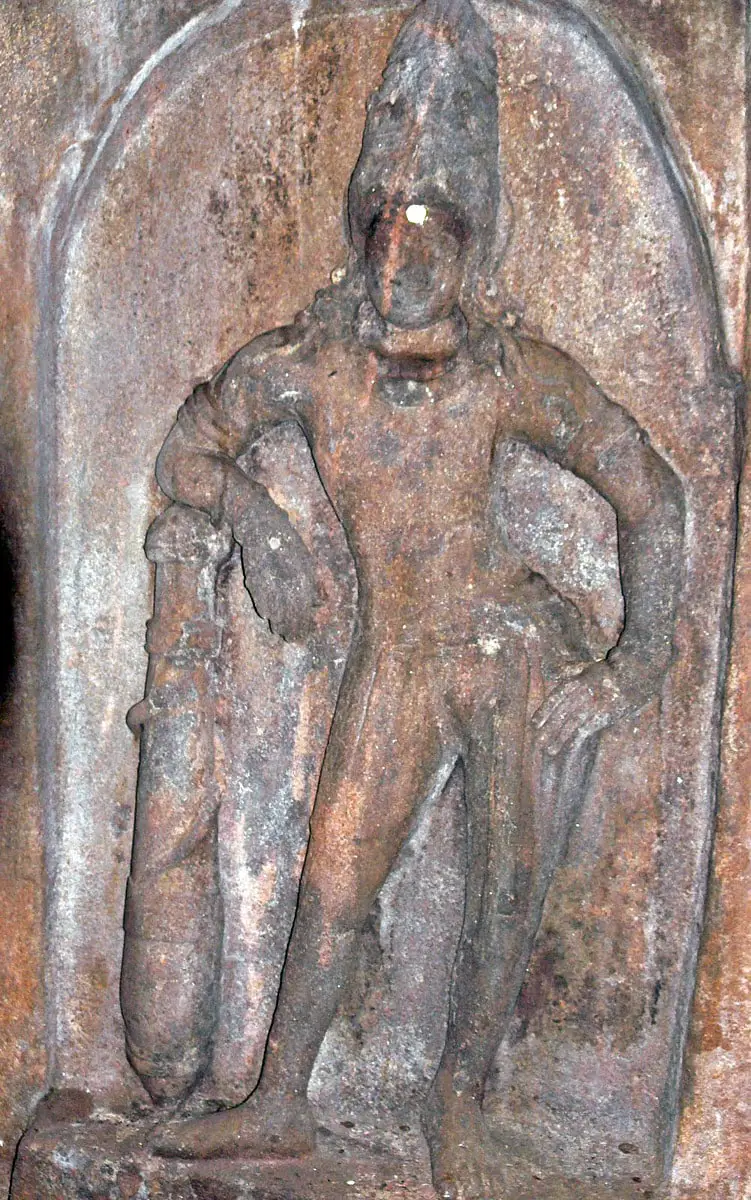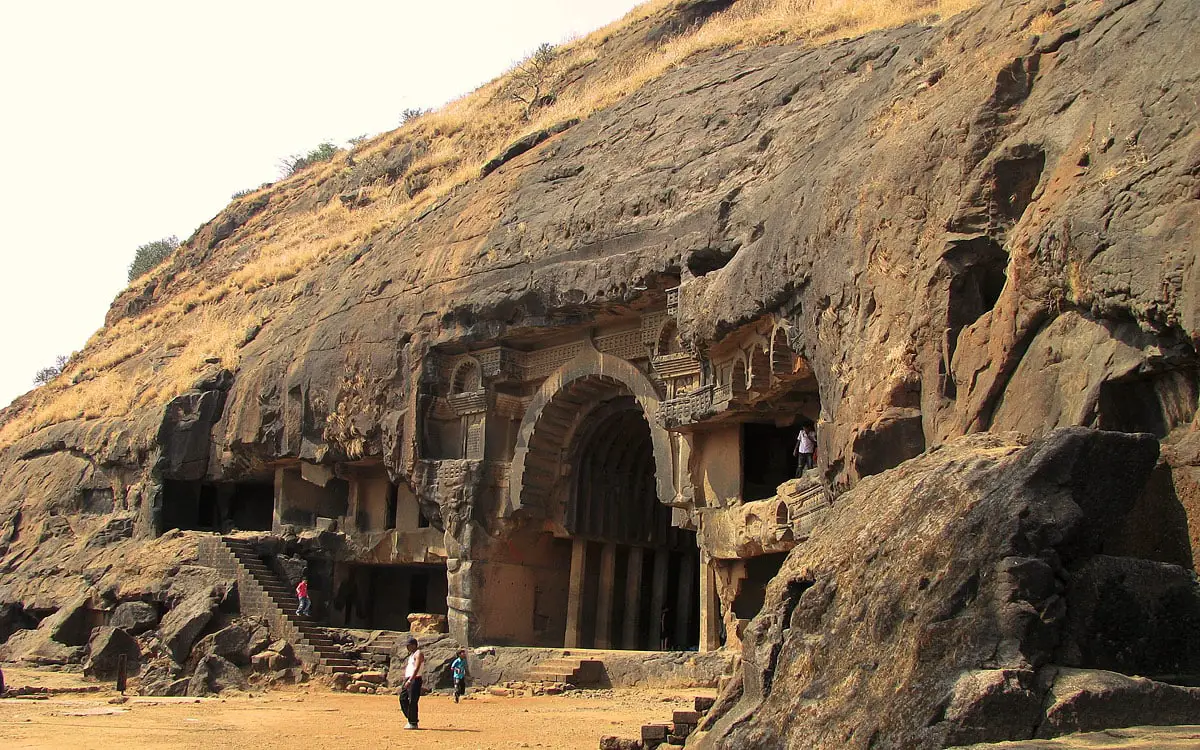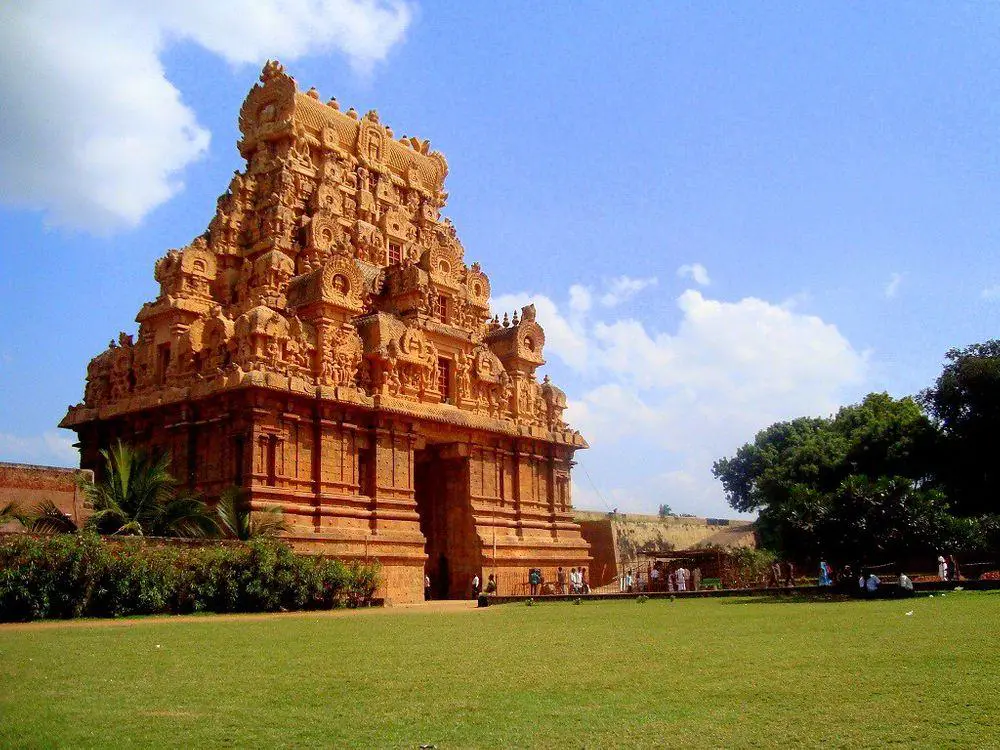World 🢖 Asia 🢖 India 🢖 Tamil Nadu
Hindu shrines 🢔 Religious architecture 🢔 Architectural wonders 🢔 Categories of wonders
Wonder
Melakkoil – Kudumiyanmalai Cave Temple

 In short
In short
Popular tourist destination near Pudukottai is the impressive Kudumiyanmalai temple complex. One of the most interesting monuments of the past here is Melakkoil – rock-cut Hindu temple.
 42.3%
42.3%
GPS coordinates
Location, address
Alternate names
Age
Religion
Map of the site
If you see this after your page is loaded completely, leafletJS files are missing.
 In detail
In detail
Melakkoil was created in the 7th century by Pandyas (Mahendravarma Pallavan) as a single monolith. One of the characteristics of the Pandyan temple is linga cut out of monolith just like the whole temple.
Melakkoil contains many inscriptions. One inscription is made in the 36th year of the reign of Kulottunga Chola I (1070 – 1118) and records commercial transactions that ensured supplies to the temple.
In the 13th century there was a case when the temple property was put for auction. Temple dancer Thiru-k-kaariyaan Magal Umaiyal Nachiar bought it and transferred it back to the temple. She later built the Soundaravalli Amman temple next to the cave temple.
Ragunaatharaayath Thondaimaan (1686 -1730) built the outer mandapam of the cave. Interesting detail since this time are sculptures of two seemingly relaxed dwarapalas (guards of the temple) standing at the portal inside the outer mandapam.
Around the 10th century there was built another temple on the other side of the hill – Kuduminatha temple. It developed into an impressive temple complex with an especially impressive monument of architecture – 1,000 pillared mandapam (having "only" 645 pillars).
Close to the temple there are several more exciting monuments of the past.
Above the temple there is a bas-relief of Shiva and Parvati sitting on Nandi, flanked by 63 Nayanmars – devotees of Lord Shiva from Tamilnadu. Nayanmars are arranged in long rows on both sides of the family of deities.
To the south of the temple there are famous Music Inscriptions – the 7th-century cliff inscription in Sanskrit, a treatise about the theory of music left for the benefit of students. Earlier it was considered to be a deed of king Mahendra Pallava, though late studies have shown that inscription is done by King Parama Mageshwaran.
To the south of the temple there is also a stone carving of Ganesh.
References
- Confluence of different styles, The Hindu, April 10, 2009. Accessed on May 9, 2010.
 Linked articles
Linked articles

Rock-cut architecture and sculptures
Rock-cut architecture is a very ancient form of architecture – the oldest structures are more than 5 thousand years old. The resistivity of the natural stone and the constant climate inside these structures has preserved many art values around the world.

Wonders of India
India is the seventh-largest country in the world by area, and, naturally, such a large area contains a huge amount of exciting attractions…
Wondermondo considers that India is the second richest center of architectural heritage in the world after Europe and maybe no single country in the world can match it in this respect.

Hindu shrines
Hinduism is one of the oldest religions – possibly the oldest one among contemporary religions and Hindu temples belong to the most impressive religious buildings in the world.
 Recommended books
Recommended books
History of Tamil Nadu
Tamils have a long history starting from the pre-historic period. Retracing their history is facilitated by various sources. One-third of India’s epigraphical sources pertain to Tamil Nadu and one of the dynasties of Tamil Nadu – the Pandyas – had the privilege of continuous rule from third century B.C. to sixteenth century A.D. It is a unique accomplishment in the annals of history since very few dynasties in the world have reigned for such a long time.
India: A Sacred Geography
A spiritual history of the world’s most religiously complex and diverse society, from one of Harvard’s most respected scholars.



